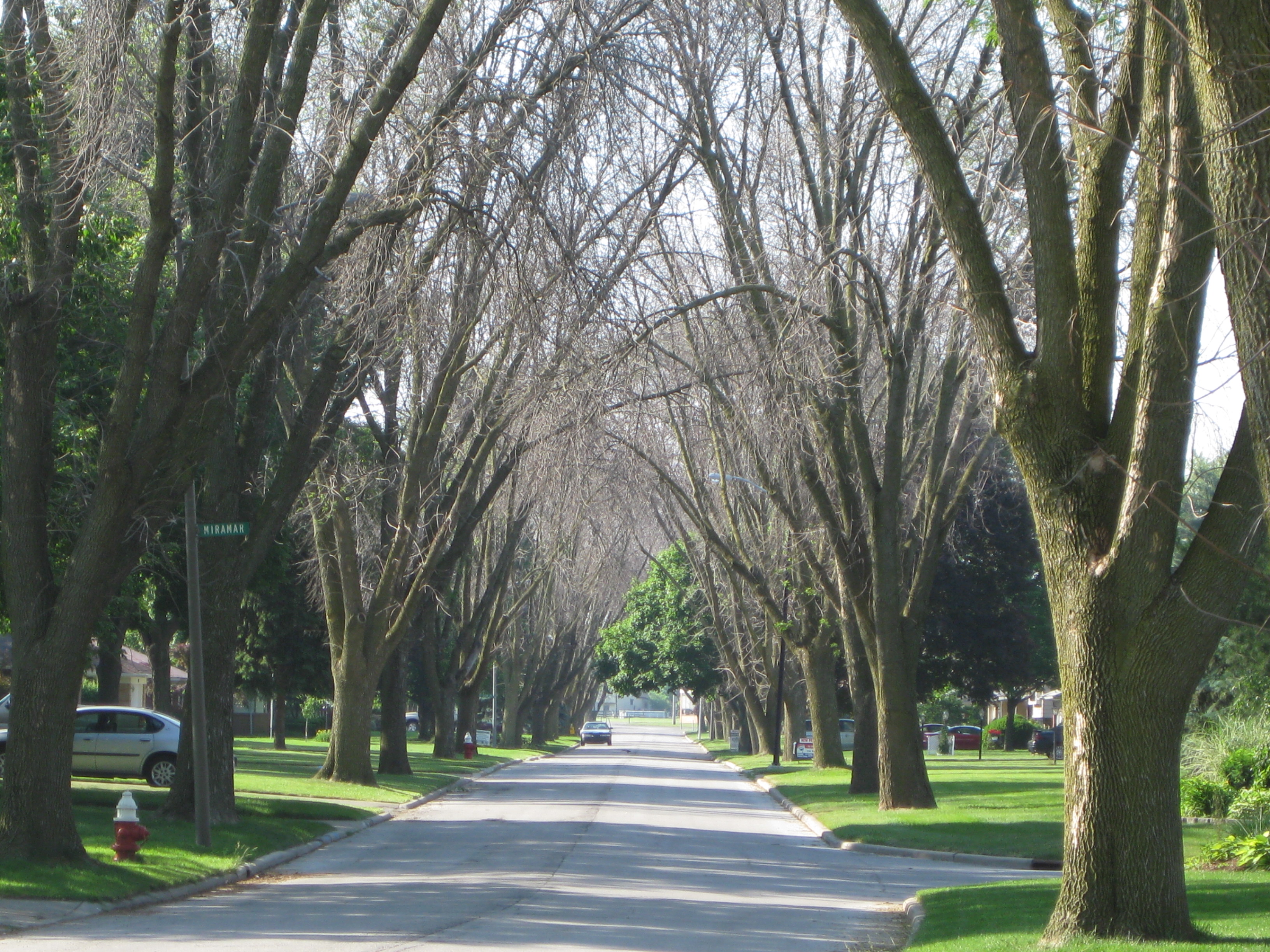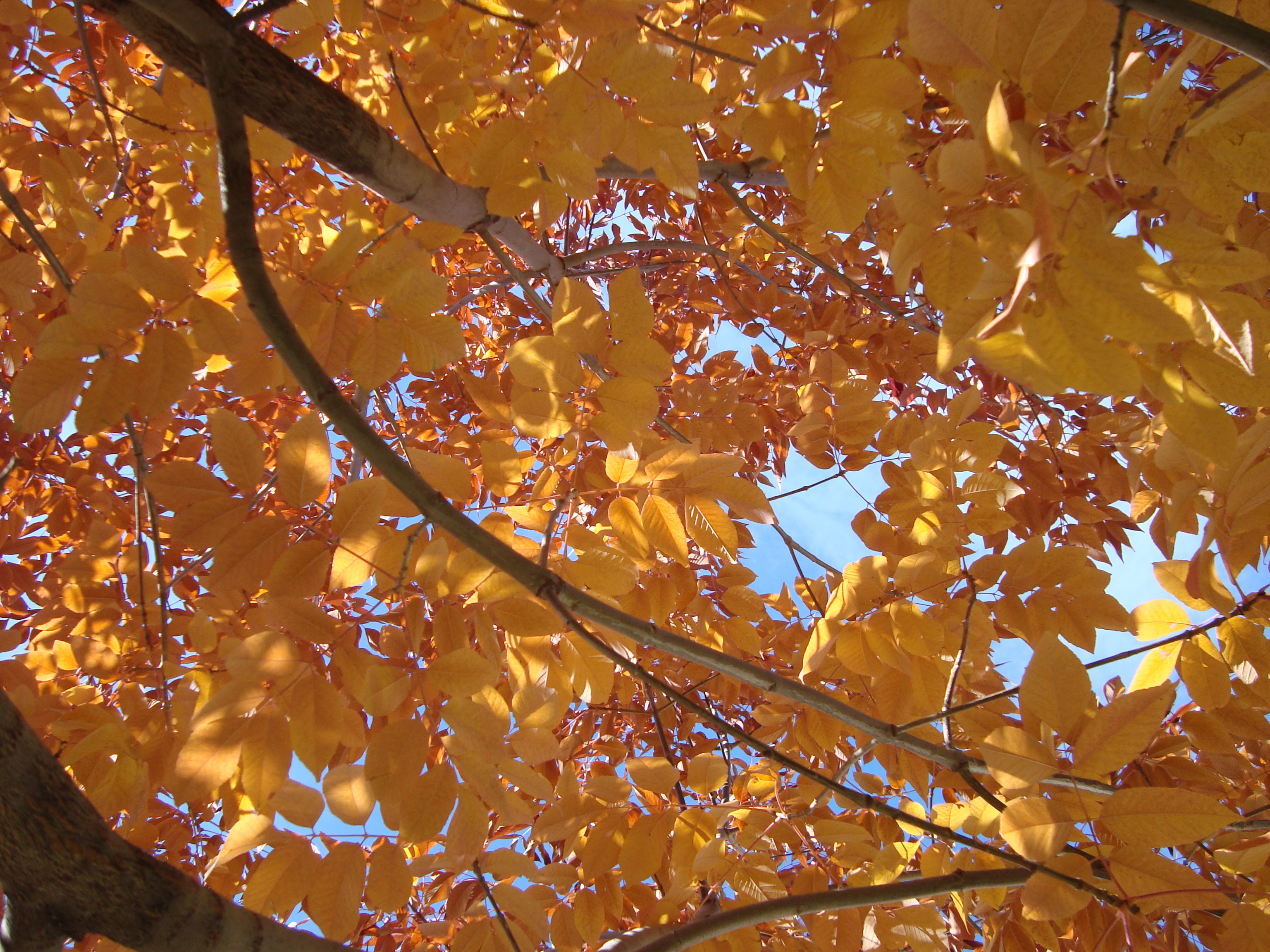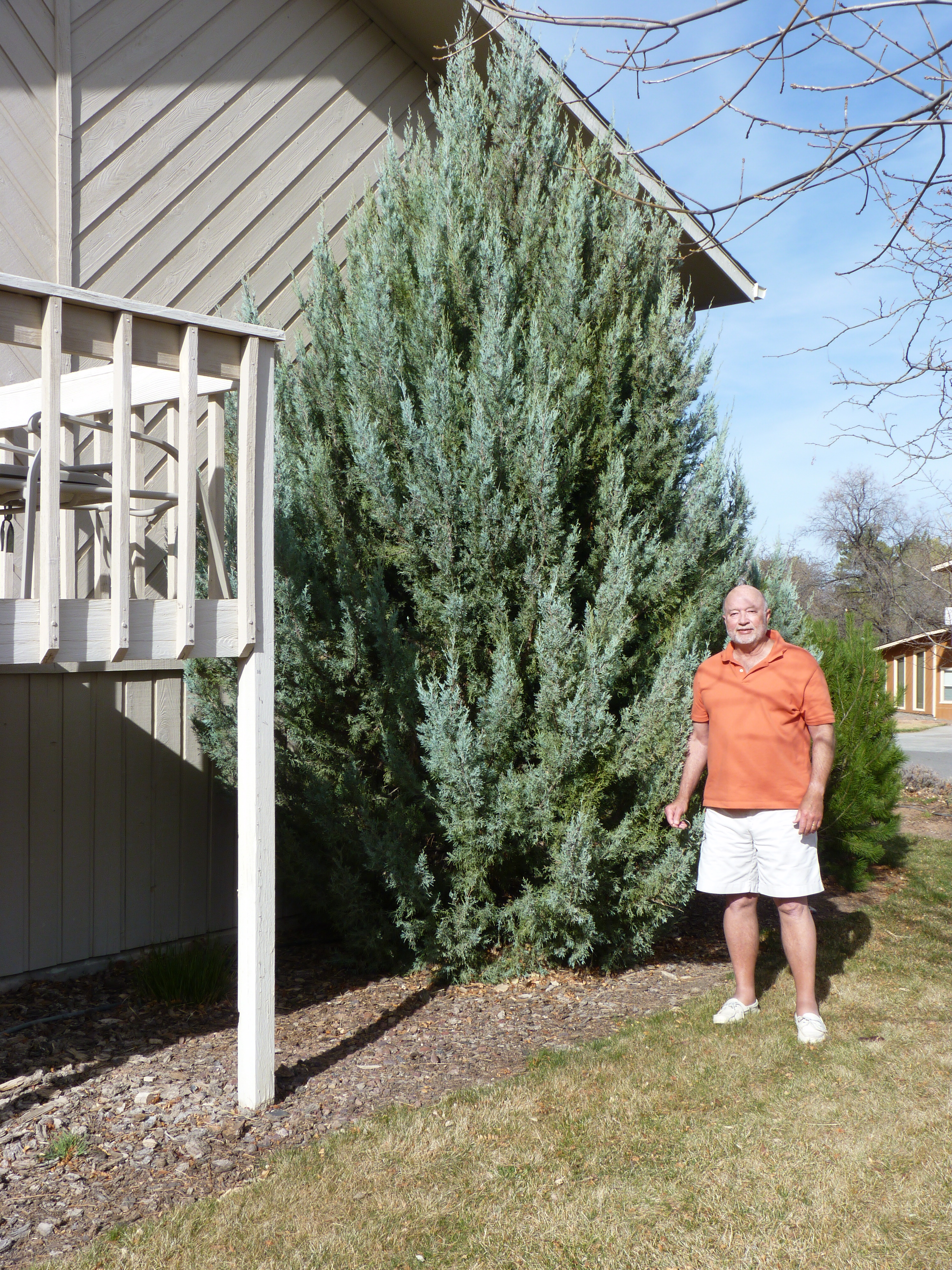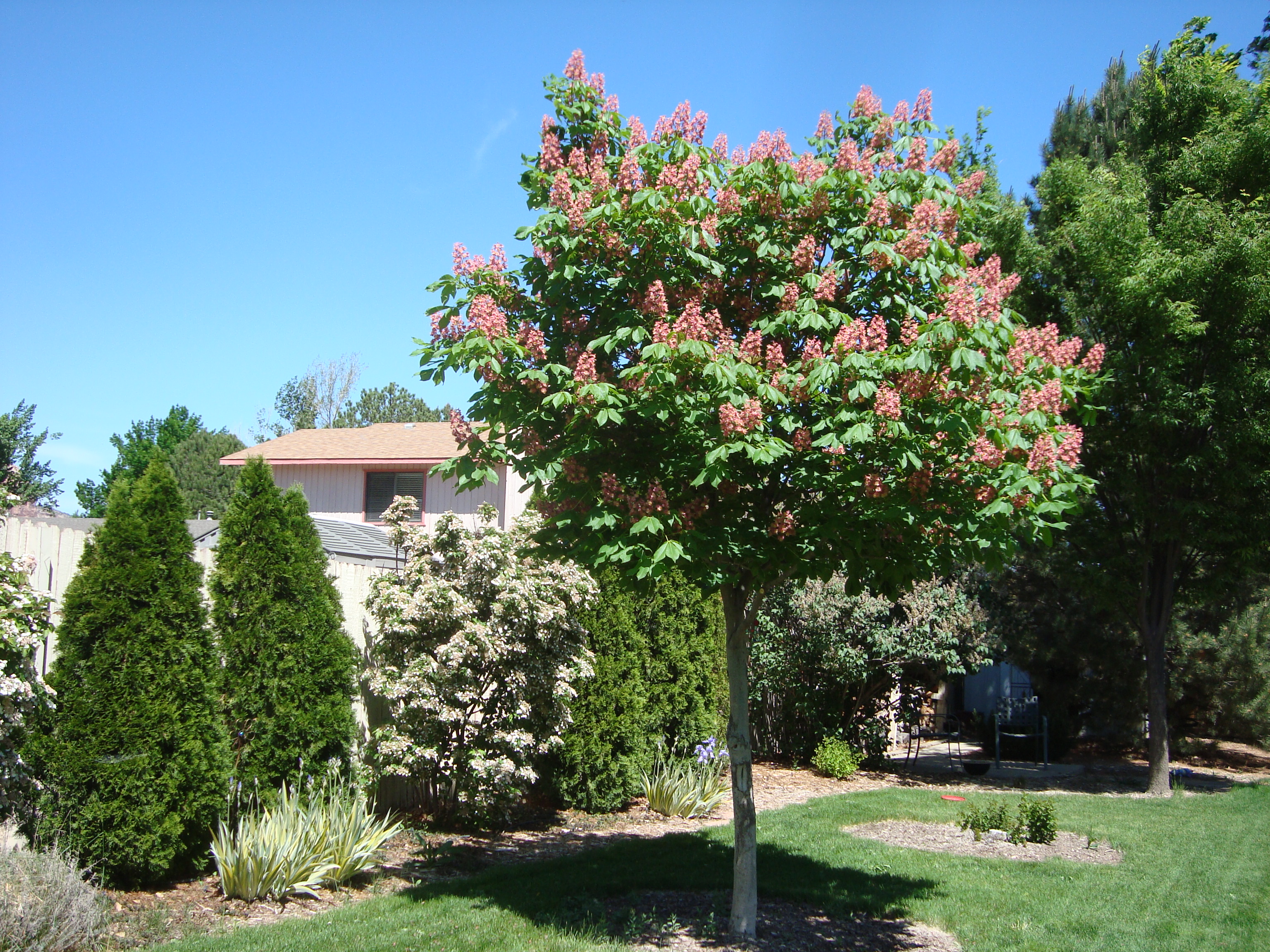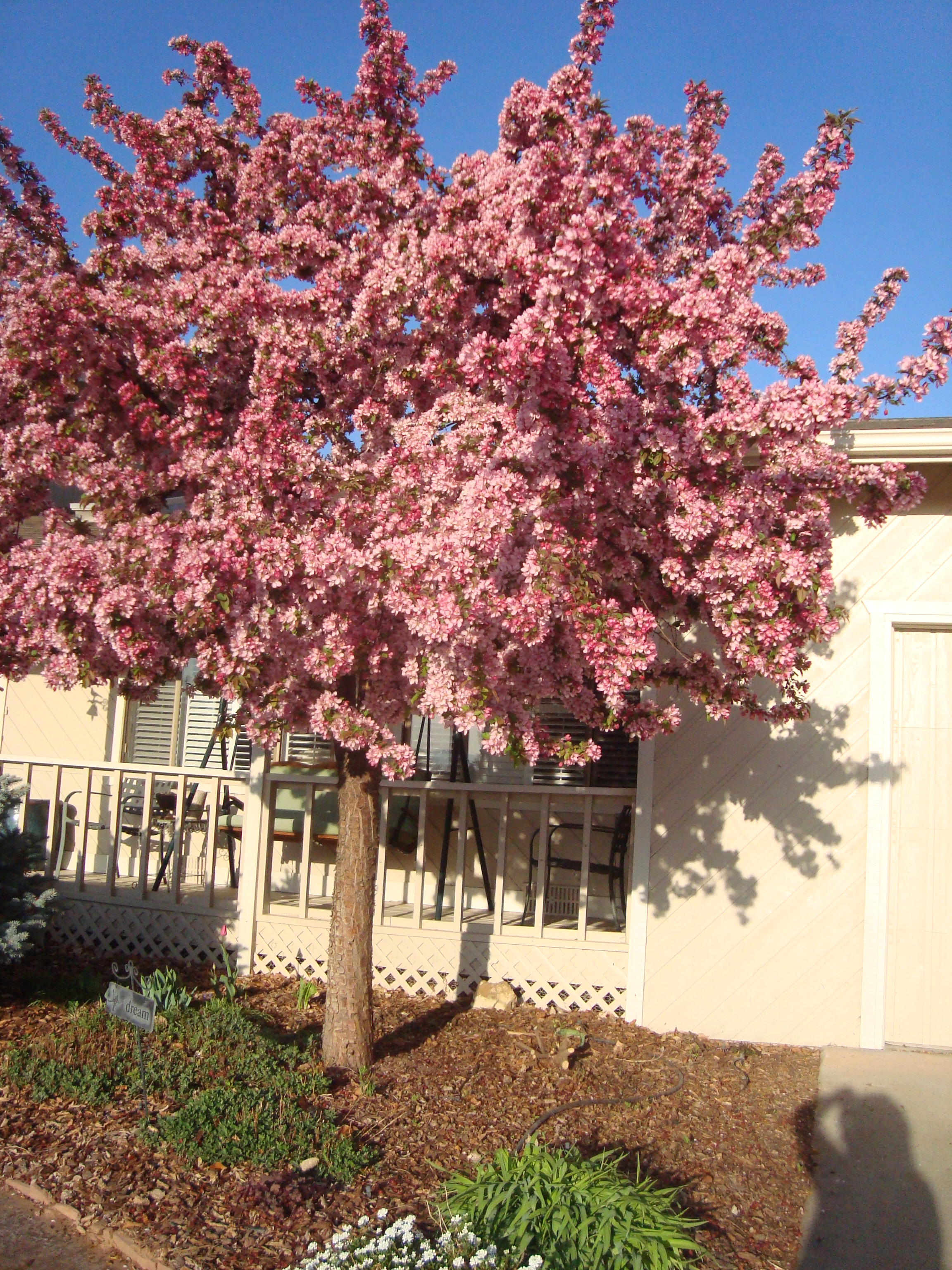I recently attended a seminar on Urban Forest Diversity given by Vince Urbina, a community forester with the Colorado State Forest Service. Vince has been our local authority on urban forests and has taught classes through the CSU Extension master gardener program for many, many years.
His talk on diversifying our urban forest was especially topical now that the Emerald Ash Borer has been found in Boulder, Colorado.
He showed us the effects of not diversifying our trees through three major tree disasters. The Emerald Ash Borer destruction has spread from Detroit, Michigan in 2002 throughout the entire eastern and Midwestern areas of the United States. The other major tree disasters which have occurred in the U.S. are the Chestnut Blight and Dutch Elm Disease. Combined, these three tree disasters have wiped out almost 4 BILLION trees since the early 1900’s. Thank you to Dan Herms of Ohio State University for the following stark picture of the destruction of EAB.
What forces enable these insects or fungi to wreak havoc on such a large scale on our trees? One word – Monoculture. When a seemingly “perfect” tree is introduced to the public, it gets overplanted in a big way. Cities and towns across America have planted Chestnuts, Elms and Ash trees along roads in massive quantities. They are the perfect street trees. Strong limbs, fast growers, good shape, etc. But, when the insects and diseases come to town, there is an endless supply of hosts to continue their wrath.
What Vince is proposing is something that will slow down the destruction and increase the health of our tree populations. Diversify the community forests by planting several different types of trees instead of focusing on one or two “perfect” street trees.
Here is a list of Vince’s favorite trees that are suitable for Colorado. These are in no particular order and encompass ornamental trees, large shade trees and conifers.
- ‘Spring Snow’ crabapple – beautiful shape, white flowers, no fruit
- Russian hawthorn – bright red fruit, horizontal branches very architectural
- ‘Winter King’ hawthorn – exfoliating bark, white flowers, orange fruit
- Swedish Columnar Aspen – does well in lower elevations
- Redleaf chokecherry – very cold tolerant, beautiful maroon and green foliage
- ‘Sensation’ Boxelder – not bothered by box elder bugs, gorgeous variegated foliage tinged with pink and cream. May become overplanted because it is so “perfect”
- Kentucky coffeetree – very gangly when young but stately with age. Rugged bark
- Bur Oak – One of the best oaks for Colorado
- Western Catalpa – native to our area. Huge white blossoms which turn into long cigar shaped seed pods.
- ‘Autumn Blaze’ pear – Great fall color, waxy leaves make it drought tolerant
- ‘Princeton Elm – new variety of elm. Great shade tree, high salt tolerance
- Big tooth maple – native to Utah and Colorado, great fall color, usually found in multi-stem form
- Douglas Fir – native to Colorado. Does well even in Grand Valley
- ‘Radiant’ crabapple – no persistent fruit, resistant to blight
I love tree diversity and have implemented this principle in my own yard. I live in a subdivision on a corner lot approximately 100’ x 100’. Even though I have a relatively small lot, I have planted quite a few trees that add shade, color, texture and interest year round. Here is a list and a few pictures of my trees.
A complete list (as of today!) of the trees in my yard:
- ‘Indian Summer’ crabapple
- Russian hawthorn
- ‘Sunburst’ honeylocust
- ‘Autumn Purple’ ash
- Colorado blue spruce
- ‘Wichita Blue’ juniper
- Eastern redbud
- Columnar blue spruce
- ‘Sargent’ crabapple
- ‘Ft. McNair’ red horsechestnut
- ‘Green Vase’ zelkova
- Austrian pine
- ‘Arnolds Sentinel’ scotch pine
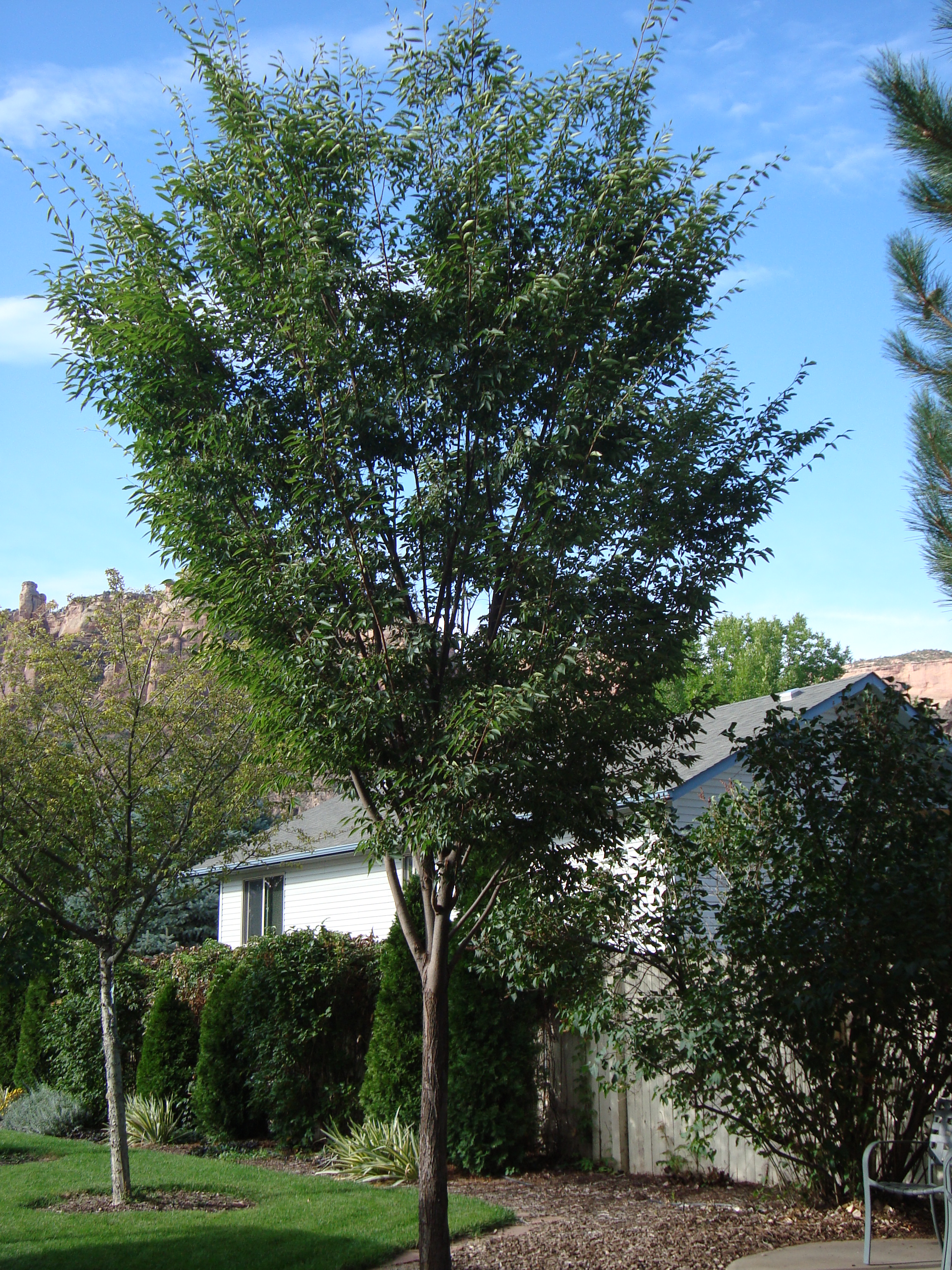
Green Vase zelkova. One of my favorite shade trees – very columnar for smaller yards, fast growing and no pests.
I would like to encourage you to plant outside the box. Find something different yet appropriate for your yard. Between Vince’s list and mine, there should be something for everyone. Remember, diversity shines in your landscape.



